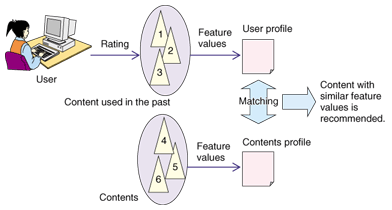As we discuss in the previous topic, we now understand that the Recommender Systems (RSs) is a way to deal with the overload information/products that customers may encounter. And right now, we are going to dig into the reasons why it's a trend that companies tend to use RSs.
- Increase the number of items sold.
- Sell more diverse items.
- Increase the user satisfaction.
- Increase users' fidelity
- Better understand what the user wants.
It's always their objective for companies to increase their revenues. For those companies which have a great deal of products, RSs are the way to increase their revenues.
First, increase the number of items sold. For example, if you want to buy a new boots on Amazon, you may first search for a specific brand that you like. But you didn't see any style that is cool enough, so you didn't buy any pairs. When you are about to give up, you'll see that Amazon would recommend you the items that are similar to the items you viewed. you may be able to find something that is fascinating from it's recommendation. And the following will be that you click the botton and buy the shoes, while Amazon successfully use the RSs to increase its revenues.
Second, sell more diverse items. Here's another example from Amazon. See the cropped picture below. When I look at the macbook air product page, you'll see there's kind of a bundle suggested by Amazon. it'll suggest you the items that other customers would buy together. Although it's not like a bundle promotion which will offer you some discount (the price is just the sum of the three product...), it still increases customers' incentive to buy them together.

Third, for sure that the customers satisfaction and fidelity will increase. The RSs can reduce the time that customers spending on browsing back and forth in the different categories. It can help the customers to find the stuffs they want in a relatively short time. In addition, the longer the user interact with the websites/RSs, the more effective and accurate the recommendation will be. And, at the end, the cycling of the increasing usage and the increasing benefit will reach satisfaction and fidelity.
Finally, understand what the user wants. The data collected by the systems is not only doing good for the customers, but also helping the companies to understand what the user wants. It's a valuable data. it can help the companies to adjust many things like the inventory, the product categories, and even the business strategies. When you understand more from your customers, you are able to exploit more from them.
Okay, so the above are several reasons why companies tend to use the Recommender Systems. In the near future, I'll introduce some of the techniques that are used in the RSs. Stay tuned.





